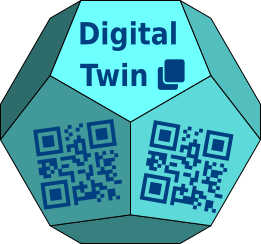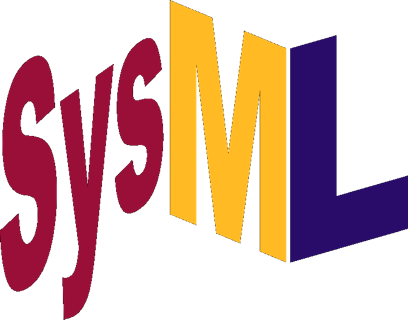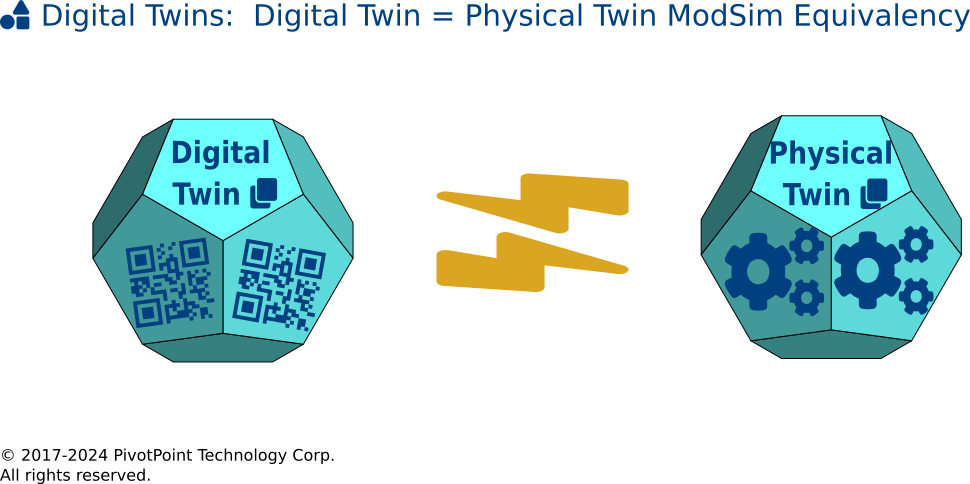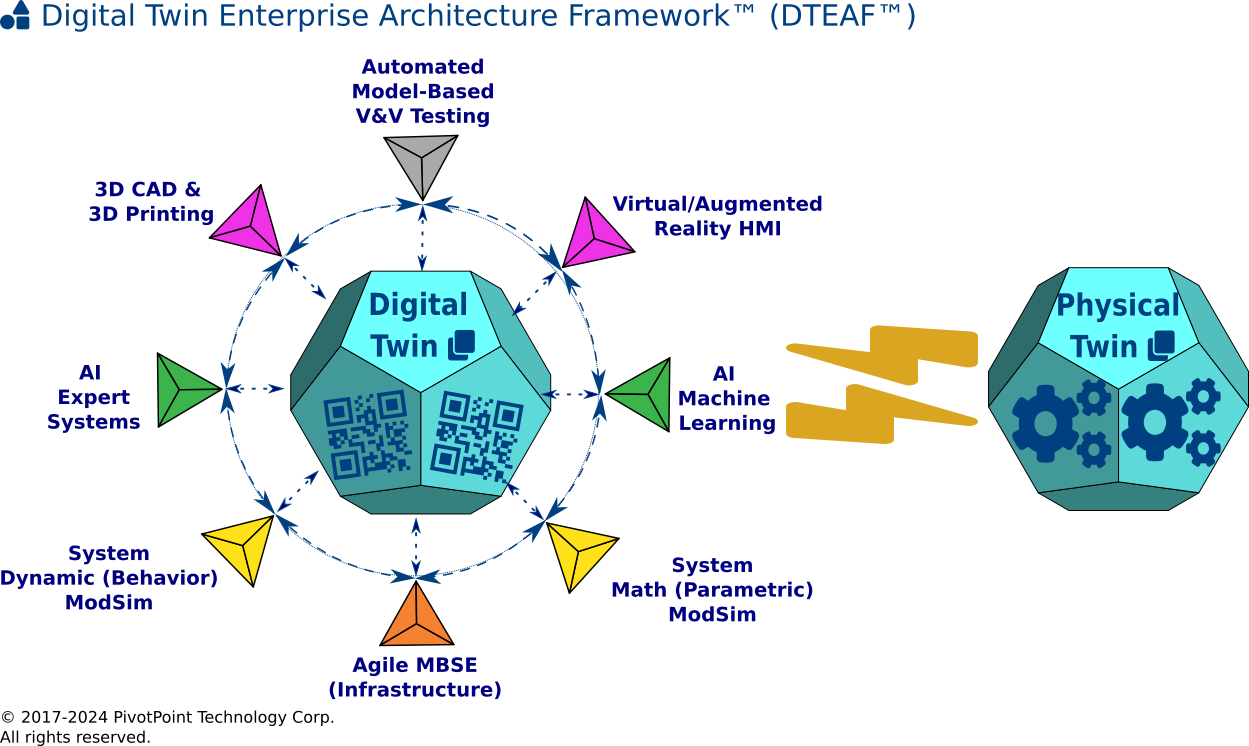Digital Twin & Digital Engineering Overview
This section provides an overview of Digital Engineering and Digital Twin technologies, including a formal definition and information about Digital Engineering core concepts, origins, characteristics, enabling technologies, and variations.
Digital Engineering Paradigm Synopsis
| Property | Description |
|---|---|
| Definition: |
For more information about Digital Enginering, see DE FAQ: What is Digital Engineering?. |
| Aliases: | Digital Twin, Virtual Engineering |
| Process Classification: | Engineering Paradigms —> Systems Engineering —> Model-Based Systems Engineering (MBSE) —> Digital Engineering |
| Core Concepts: | Some core Digital Engineering concepts are defined below:
For more information about Digital Twins, see DE FAQ: What is a Digital Twin?. |
| Enterprise Architecture Framework (EAF): | What is the Digital Twin Enterprise Architecture Framework™ (DTEAF™)?FAQ Variant(s): What is the DTEAF?; What is an Enterprise Architecture Framework for Digital Twins?Definition
DTEAF is derived from 25+ years experience designing and implementing recursively scalable and simulatable Enterprise Architecture Frameworks for Model-Driven Development (MDD) and Agile Model-Based Systems Engineering (Agile MBSE) applications. Since both the 6D System M-Model reference EAF and the DTEAF are specified using recursive architecture and design patterns using the OMG SysML™ architecture modeling language standard, they can be implemented and customized using popular architecture modeling tools that support that standard (e.g., MagicDraw™/Cameo™, Sparx Enterprise Architect™). |
| Process Origin: | Etymology
|
| Current Specification: | Open Standards Work-in-Progress: Digital Twin Consortium |
| Process Characteristics: | • General purpose?
[Applies to any System-of-Systems fractal problem.] • Multi-disciplinary? [Combines Agile MBSE, Mathematical & Behavioral ModSim, AI & Machine Learning (ML), 3D CAD/CAM & 3D Printing, and Virtual & Augmented Reality (VR/AR) engineering disciplines] • Mature open standards? [Standards and frameworks relatively immature] • Rigorous discipline? / [Approaches based on proven Agile MBSE + ModSim principles and best practices are pulling ahead.] • Scaleable? [Can scale for projects with 100+ engineers.] • Supports Agile or Lean processes? [Must be adapted for Agile + Lean methods.] • Automated tool support? / [Tool vendors have not yet risen to the massive Simulation-of-Simulations challenge.] |
| Enabling Technologies: | • Agile Model-Based Systems Engineering
• Mathematical & Behavioral ModSim
• AI & Machine Learning (ML)
• 3D CAD/CAM & 3D Printing
• Virtual & Augmented Reality (VR/AR) |
| Process Usages: | • Commercial applications across diverse domains
• Defense-Aerospace applications
• Estimated Number of Users: N/A |
| Process Variations: | Digital Engineering is an emerging multi-discipline; distinctive process variations have not yet emerged. • Virtual Engineering |
| Tool Support: | See Digital Engineering Tools section for selected reviews of popular software tools that support DE applications. |
DIGITAL TWIN WORKS, DIGITAL TWIN ENTERPRISE ARCHITECTURE FRAMEWORK, DTEAF, AGILE MODEL-BASED SYSTEMS ENGINEERING, AGILE MBSE, and AGILE MBSE 6D EAF are trademarks of PivotPoint Technology Corporation. All other product and service names mentioned are the trademarks of their respective companies.






